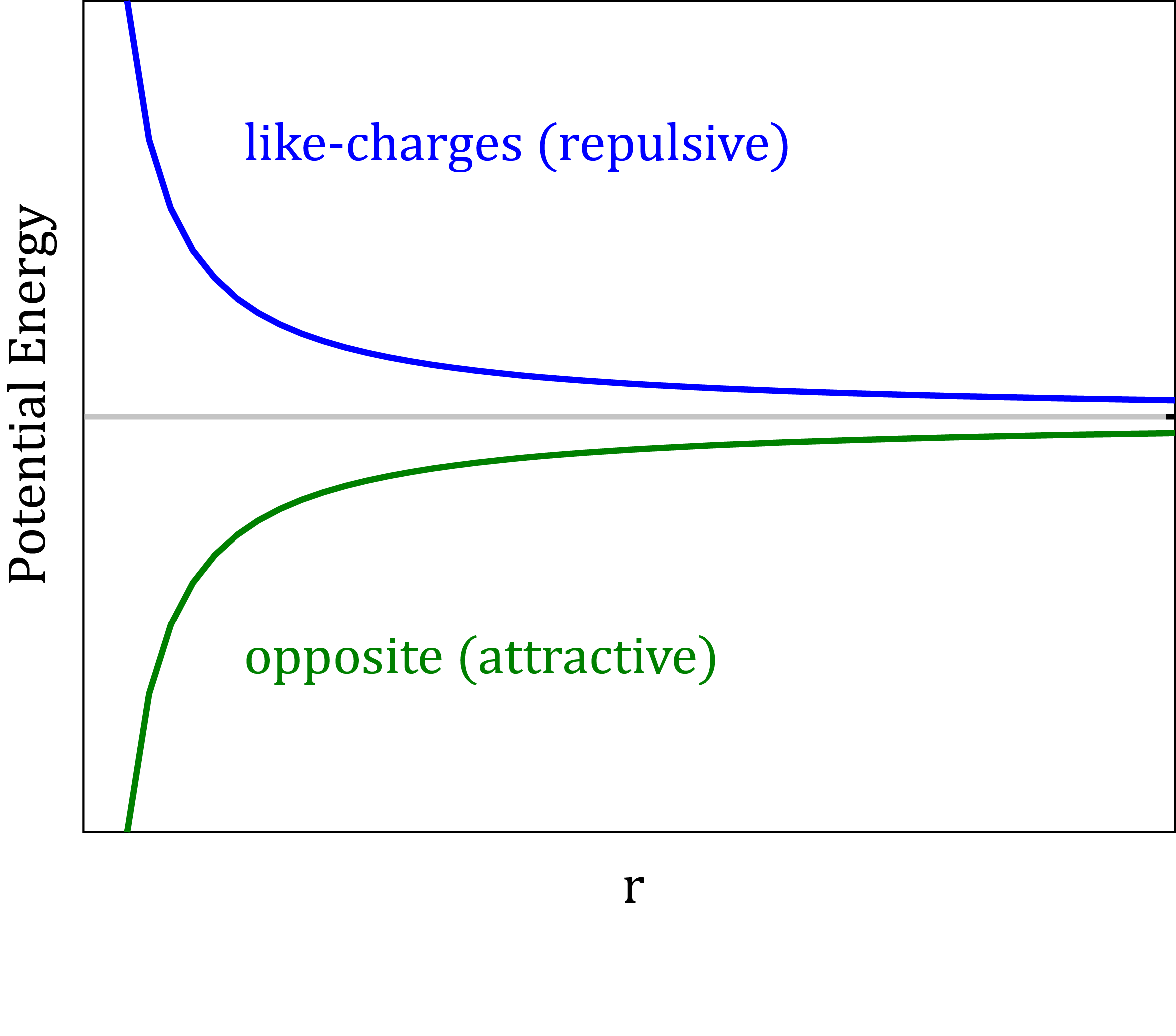Electrostatic Interactions
Overview
Teaching: 10 min
Exercises: 0 minQuestions
How electrostatic interactions are calculated in periodic systems?
Objectives
Learn what parameters control the accuracy of electrostatic calculations
Coulomb interactions
- Long range: $V_{Elec}=\frac{q_{i}q_{j}}{4\pi\epsilon_{0}\epsilon_{r}r_{ij}}$

- Computing Coulomb potentials is often the most time consuming part of any MD simulation.
- Fast and efficient algorithms are required for these calculations.
Particle Mesh Ewald (PME)
- The most widely used method using the Ewald decomposition.
- The potential is decomposed into two parts: fast decaying and slow decaying.
Fast decaying short-ranged potential (Particle part).
- Sum of all pairwise Coulomb interactions within a cutoff radius
- Implements same truncation scheme as the LJ potentials.
Slow decaying long-ranged potential (Mesh part).
- Slowly varying, smooth and periodic function.
- All periodic functions can be represented with a sum of sine or cosine components.
- Slowly varying functions can be accurately described by only a limited number of low frequency components (k vectors).
PME algorithm
- Long-range electrostatic interactions are evaluated using 3-D grids in reciprocal Fourier space.

- Assign charges to grid cells. Charges in grid cells are obtained by interpolation.
- Compute Fourier transform.
- Compute potential. Coulomb interaction decays rapidly in Fourier space, and summation converges fast.
- Compute inverse Fourier transform.
- Interpolate gridded potentials back to atomic centers.
Simulation parameters controlling speed and accuracy of PME calculations.
- Grid spacing. Lower values lead to higher accuracy but considerably slow down the calculation.
- Grid dimension. Higher values lead to higher accuracy but considerably slow down the calculation.
- Direct space tolerance. Controls the splitting into direct and reciprocal part. Higher tolerance shifts more charges into Fourier space.
- Interpolation order is the order of the B-spline interpolation. The higher the order, the better the accuracy.
Challenge: Electrostatic interactions
What would you do to improve electrostatic calculations accuracy?
- Increase grid spacing
- Lower the grid dimensions
- Reduce the interpolation order
- Make direct space tolerance smaller
Solution
Make direct space tolerance smaller
PME variables
Variable \ MD package GROMACS NAMD AMBER Fourier grid spacing fourierspacing (1.2) PMEGridSpacing (1.5) Grid Dimension [X,Y,Z] fourier-[nx,ny,nz] PMEGridSize[X,Y,Z] nfft[1,2,3] Direct space tolerance ewald-rtol (\(10^{-5}\)) PMETolerance (\(10^{-5}\)) dsum_tol (\(10^{-6}\)) Interpolation order pme-order (4) PMEInterpOrder (4) order (4)
Key Points
Calculation of electrostatic potentials is the most time consuming part of any MD simulation
Long-range part of electrostatic interactions is calculated by approximating Coulomb potentials on a grid
Denser grid increases accuracy, but significantly slows down simulation